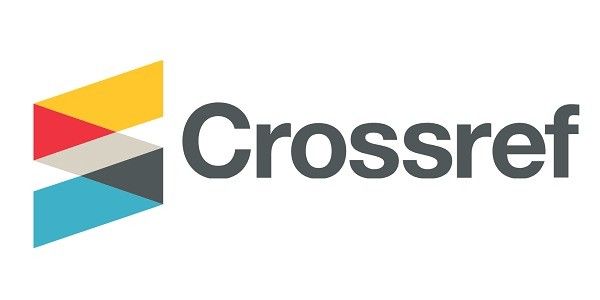
Editor in Chief
Dr. (Prof.) Shalini Mohan
Head of Department of Ophthalmology,
GSVM Medical College, Kanpur, Uttar Pradesh, India.
|
Instructions for Authors The UP Journal of Ophthalmology , UPJO (ISSN No 2250-1916), is a peer reviewed, official scientific journal of the Uttar Pradesh State Ophthalmological Society, UPSOS (Northern Ophthalmological Society, NOS). The journal is being published every 4 monthly and accepts articles related to Ophthalmology & its subspecialties. The Journal is an open access journal available free to its members and is in the process of getting indexed. It has been published regularly both online & in print form. The UPJO is free open access journal and does not charge for processing of the manuscript. The journal can be accessed on following link: https://www.upsosonline.com/upsos-journal.php The journal accepts variety of articles like · Original research · Review article · Case Series · Case Reports · Letter to Editor · Photo essays. · Innovations The Guest Editorials are only accepted by invitation. All manuscripts submitted for publication to the UPJO should include the following: (1) Title page file; (2) Article file; (3) Tables & Figures; (4) Undertaking by authors & copyright transfer agreement. 1. TITLE PAGE FILE This should include a Covering letter, Title page and Author’s contribution in a single file. A short running title not exceeding 6-7 words must also be provided.
2. MANUSCRIPT FILE Manuscripts must be submitted via journal website and email to the editorupsos2018@gmail.com. You will get back the response within 2 weeks’ time. Authors do not need to pay for submission, processing or publication of articles. Manuscripts should be presented in as concise form as possible, typewritten neatly with double spacing in Arial/ Times New Roman font. Pages should be numbered consecutively and the contents arranged in the following order: Title Title of the article should be short yet sufficiently descriptive and informative so as to be useful in indexing and information retrieval. Abstract and Keywords: All manuscripts should have a structured abstract (of 250 words or less) with subheadings of Objectives, Methods, Results, and conclusions. Abstract should indicate the scope and significant results of the paper. It should only highlight the major & relevant findings and conclusions so that it can be used by abstracting services without modification. Introduction Introduction should be brief and precise and should highlight the scope of the paper. Review of the literature should be restricted to reasons for undertaking the present study and provide only the most essential content. The objective of the study should be written clearly with adequate justification of the reasons for the study. Material & Methods It should include the details of the study type/design, subjects, including sample size calculation and strength of study. The diagnostic/investigationsl/surgical procedures adopted should be clearly stated to enable other workers to reproduce the results, if necessary. The newer methods may be described in sufficient detail indicating their advantages & limitations. The nomenclature, the source of material and equipment used, with the manufacturers details in parenthesis, should be clearly mentioned. Established methods can be just mentioned with authentic references. It is mandatory to obtain ethical clearance while reporting experiments on human subjects and animals, by the standards laid down by the national bodies or organizations of the particular country. The drugs and chemicals used should be precisely identified, including generic name(s), dosage(s) and route(s) of administration. Study design: Selection of the observational or experimental participants (patients or laboratory animals, including controls, whether randomly or consecutively) should be mentioned clearly, including eligibility and exclusion criteria and a description of the source population. Period (with month and year) and place of the study should be clearly stated. The statistical analysis done and statistical significance of the findings when appropriate, should be mentioned. The type of software used and its make should also be clearly mentioned. Avoid giving too much detailed description of analysis Unless absolutely necessary for a clear understanding of the article. Articles based heavily on statistical considerations, however, need to give details particularly when new or uncommon methods are employed. Results: The data should be arranged in comprehensible and coherent sequence. The data that are essential for understanding the discussion and main conclusions emerging from the study should only be included. Make sure not to repeat the data presented in Tables and Figures. The same data should not be presented both in tabular and graphic forms. Interpretation of the data should be taken up only under the Discussion and not under Results. Discussion: The discussion should deal with the interpretation of results without repeating information already presented under Results. It should relate new findings to the known ones and include logical reasonings. This should also include weaknesses/limitations/lacunae of the study. The conclusions can be correlated with the goals of the study but statements and conclusions not completely supported by the data should be avoided. Recommendations may be included as part of the discussion, only when considered absolutely necessary and relevant. This part should preferably end with a concluding remark. Acknowledgment: Acknowledgment should be concise and made for specific scientific/technical assistance. Financial support & Sponsorship: Acknowledgment should be made for funding support and /or sponsorship received from national or international funding agencies. Conflicts of interest: A full disclosure of conflict to the Editor is an absolute requirement. A conflict of interest exists if authors or their institutions have financial or personal relationships with other people or organizations that could inappropriately influence (bias) their actions. All submitted articles must include disclosure of all relationships that could be viewed as presenting a potential conflict of interest. If there are no conflicts of interest, authors should also mention that. References: The number of References should normally be restricted to a maximum of 30 for Original Research Articles. References to literature cited should be numbered consecutively as they come in the text and placed at the end of the manuscript. In the text they should be indicated as superscript after the punctuation. The references should be represented in Vancouver style. The titles of the journals should be abbreviated according to the style used by the PubMed. 3. TABLES & FIGURES Tables and graphs should be included in main Manuscript file in MS Word file format. Tables should numbered consecutively with Roman numerals (I, II, III, etc) with short title and column headings should also be short. Units of measurement should be abbreviated and placed below the headings. Abbreviations used be given in the footnote. Figures should be submitted in good resolution pictures in JPEG or TIFF format numbered consecutively in Arabic numerals with appropriate Title and explanation of symbols in the legends for illustrations. All published material should be acknowledged and copyright material should be submitted along with the written permission of the copyright holder. Abbreviations Use only standard abbreviations that should conform to the International System of Units (SI), throughout the text, Tables and Figures. Generic names of the drugs should be used. If proprietary brands are used in research brand name, name of manufacturer and country should be given in parentheses after the generic name at the first place of use. 4. ETHICAL CLEARANCE The ethical committee approval should be mentioned with number, date and name of the committee. Kindly mention the reason if approval has not been done or if not needed. A scanned copy of Ethical Clearance Certificate should be submitted if study conducted on patients/ volunteers /animals. 5. UNDERTAKING BY AUTHOR(S) & COPYRIGHT TRANSFER AGREEMENT All the authors should give an undertaking indicating their consent to be co-authors in the sequence indicated on the title page. Mention names, designation as well as the address, address for correspondence including telephone numbers and email address. Author(s) will be asked to sign a transfer of copyright agreement, which recognizes the common interest that both journal and author(s) have in the protection of copyright. |
|
PROOFS Should be emailed to the corresponding author of accepted articles. Corrections should be restricted to printer’s errors only and no substantial additions/deletions should be made. No change in the names of the authors is permissible at the proof stage. If there are valid reasons for such a change, after acceptance of a paper, the permission of the Editor-In-Chief must be sought. |
Copyright Transfer Form for UP Journal of Ophthalmology
The names and email addresses entered in this journal site will be used exclusively for the stated purposes of this journal and will not be made available for any other purpose or to any other party.

Head of Department of Ophthalmology,
GSVM Medical College, Kanpur, Uttar Pradesh, India.

Dr. (Prof.) Shalini Mohan
(Editor in Chief)
Head of Department of Ophthalmology
GSVM Medical College, Kanpur Uttar Pradesh, India.

Dr. Divya Kesarwani
(Joint Editor)
Assistant Professor, Department of Ophthalmology,
TS Misra Medical College & Hospital. Lucknow, Uttar Pradesh

Dr. Abhishek Chandra
MD, Chandra Eye Hospital, Varanasi, Uttar Pradesh, India

Dr. Mohit Khattri
Senior Consultant Ophthalmologist Regency Healthcare, Kanpur, Uttar Pradesh, India


